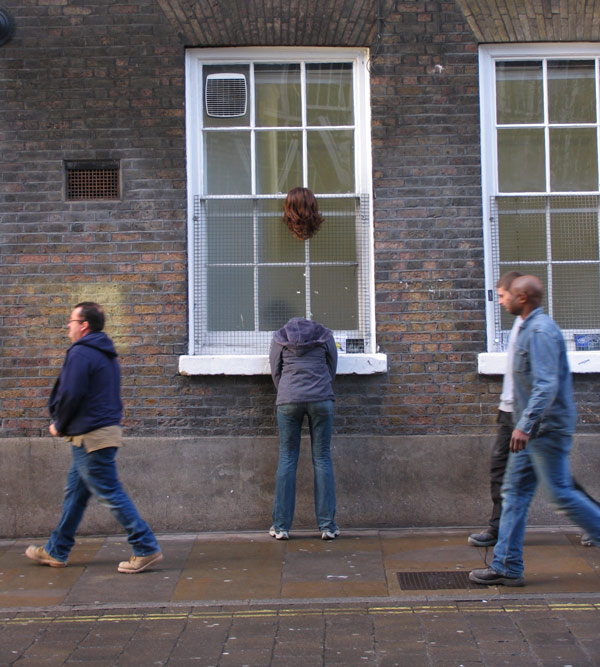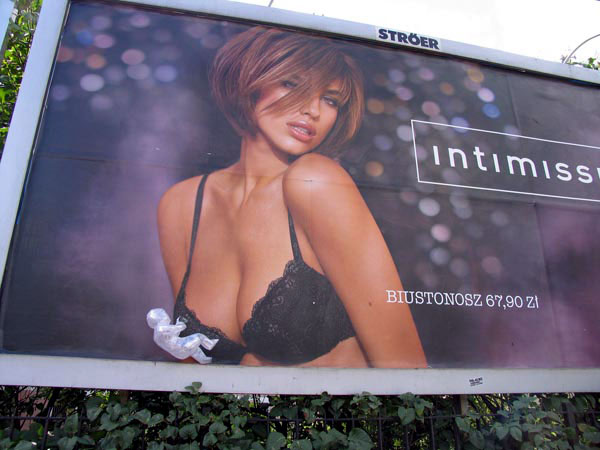






In this investigation, I wanted to get into depth of a few designers that I've found pretty intriguing and interesting. Some of them are pretty well known, some... well, not so much. Although, many of their works are world renowned, many people would never know the name without seeing their works - hate to admit it, but I am one of those people. So with this assignment, I want to familiarize myself, and more people about these designers. I wanted a diverse roster, so I decided on an architect, a photographer, and a rogue artist. I will briefly go over the architect, Antoni Gaudi, and photographer, William Eggleston, and I would like to attempt to go in depth with who I like to call the rogue artist, Mark Jenkins.
Firstly, I will focus my attention on Antoni Gaudi. Antoni Gaudi is responsible for some absolutely remarkable architecture. I had never heard the name until recently when my roommate (who is still an architect major) mentioned him. At first, I didn't recognize the name, however I did recognize some of his works, which is absolutely unmistakable. Now deceased, his works are still seen. He was born in June 25, 1852, and passed on June 10, 1926, at the age of 73, almost 74. From Spain, Gaudi used an immense amount of geometry and volume, many times not even doing drawings, but through models he made himself. He started designing in the neo-gothical age, but ended up being a forefather in the Catalan Modernist movement in the late 19th, early 20th century. His ideas, fluid and geometric, incorporate religion, architecture, his love for Catalonia, and my favorite, his integration of nature into his deign. This can be seen in his works of Casa Batllo. The fluid energy that moves through the structure is absolutely stunning, especially when the story of the building is presented (Saint George conquering a Dragon). An amazing building with an even more amazing story.
His other works include the Roman Catholic chuch known as the Sagrada Familia. This is my favorite work of his, although it is not even close to being completed. After some delay from the Spanish Civil War, progress is slowly being made on this project started over 100 years ago. Hopefully it is completed in this lifetime, as I would love to see his work come to life.
I enjoy looking over Gaudi's works, as they are plentiful. The design he uses is certainly unique, and he even creates a "brand" for himself - something hard to do in a lifetime. I've always been drawn to architecture, so to see everything he has done is mind boggling to me.
http://en.wikipedia.org/wiki/Antoni_Gaud%C3%AD
http://www.casabatllo.es/
http://www.sagradafamilia.cat/
The second designer I decided to review is, as promised, William Eggleston. Eggleston was a rebel, one could argue, using photography as art; color photography nonetheless. He was born on July 27, 1939 and has always had a thing for photo - well, maybe. At the age of 10 he received his first camera (a Brownie Hawkeye), and was quoted saying, "I took some pictures of my dog, but they weren't very good and I was completely disenchanted with the idea of taking pictures." After attending an art school, this opinion he had clearly changed. Eggleston would become one of the first artists to ever use color photos as a form of art, because back in the 1960's it was mainly a form of documentation. Today, however, his work is viewed as art. The classic feel of the mundane life portrays a powerful image. Many of his pictures were dye transfer images which gives them the vintage feel they portray today.
Although at one point his works were frowned upon, today they are widely known. I really enjoy his works, especially those out of the book "The Democratic Forest". Many of his images of still life have been reused by bands, and authors as artwork for album and book covers, for example Bleed American by Jimmy Eat World.
http://en.wikipedia.org/wiki/William_Eggleston
"Chronology" Adam Welch (2008)
"Democratic Forest" William Eggleston (1989)
The last designer I chose was very spur of the moment. From at first not seeing any of his works, or even knowing his name, I immediately fell in love with his art as soon as I StumbledUpon it. And yes, I did in fact find this man via SyumbleUpon. His name is Mark Jenkins, and he does urban installations - mostly of people. Born in Virginia in 1970, Jenkins is still relatively young, and the form of art he performs is even more so. Jenkins is a designer in the field known as "street art". What he does is make clear cast tape models of objects and people, and installs them in the streets of urban settings where they will be seen by everybody who crosses their path, thus making the bystanders subjects in the art. Although illegal, Jenkins argues that it is important for the public to understand that his works are representative of the public itself, raising the controversy it does.
His first work was done in Rio de Janiero in 2003, and since he has carried his creations with him across the world, creating new installments wherever he travels. One of his most popular pieces is "Call Waiting" in Washington, DC.
This is the very tip of the iceberg when looking at the works he has done. In 2005 he did a project called the "Storker Project" where he placed his infamous tape castings in the form of babies all around the world in various locations and scenes. On the streets, to statues, to trees, to even billboards, his babies were seen everywhere.
http://www.xmarkjenkinsx.com/storker.html
I find this idea very provoking in the sense of the controversy that it raises, and the fact that Jenkins is one of the first artists to ever do something such as this. Installations are unique, generally speaking, and these are even more with how public they are. Most figures are generally face down, or have at least some sort of hood up, as he does not concentrate on the facial features of his subjects.
I just love the freshness that comes along with his work. Being that street art has never been done in this sense, it's cool to see a new style of art being created in this generation and in this day and age. It's refreshing to see that originality is certainly not dead.
http://en.wikipedia.org/wiki/Mark_Jenkins
http://www.xmarkjenkinsx.com/
http://www.jungle-life.com/?itemid=1132
Apparently since I'm still fairly new with working Blogger, I wasn't putting the pictures where I thought I was...
ReplyDelete